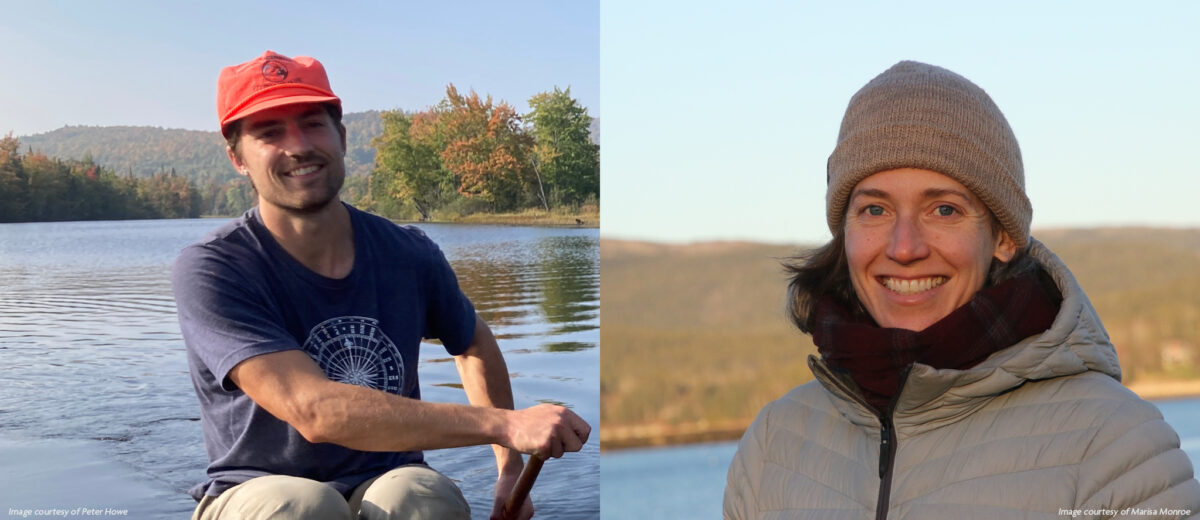Researchers to monitor amphibian movements and map forest change in Acadia National Park
WINTER HARBOR – Two scientists have been awarded Acadia Science Fellowships to conduct research in Acadia National Park. An initiative of the National Park Service, National Park Foundation, Schoodic Institute at Acadia National Park, and the David Evans Shaw Family Foundation, Acadia Science Fellows expand the capacity of the National Park Service to understand environmental change in parks.
The new awards will support research to inform management of forests and wildlife in Acadia and other national parks. The 2024 Acadia Science Fellows are:
- Peter Howe, graduate student in the University of Maine School of Forest Resources
- Marisa Monroe, graduate research assistant in the University of Maine Department of Wildlife, Fisheries & Conservation Biology
Like many national parks, Acadia is experiencing rapid changes, the impacts of which are still largely uncertain, challenging the National Park Service to manage and protect both natural and cultural resources.
“Acadia isn’t what it used to be. Still recovering from deforestation prior to park establishment, Acadia is now simultaneously responding to rapidly warming temperatures, changing precipitation regimes, and newly arriving invasive species,” said Schoodic Institute President & CEO Nicholas Fisichelli. “Protecting Acadia requires close coordination of scientists and managers to understand rapid change and develop stewardship solutions – this is the role of the Acadia Science Fellowship and we are excited to have Marisa and Peter contributing to our community of science.”
The Acadia Science Fellowship is building on the success of Second Century Stewardship, which supported 20 fellows between 2016 and 2023.
“Science and scientists play an integral part in Acadia National Park’s management,” said Superintendent Kevin Schneider. “We rely on the best available science to make the best decisions for the park. We are eager to welcome the Acadia Science Fellows to the team and work with them to understand our ever-changing landscape.”
More about the fellows and their research:
Peter Howe is creating a Northern Forest Historical Atlas with photogrammetric analysis of archival aerial photographs of the Maine woods. Using images from the Acadia region between 1949 and 1980, Howe will compile spatially accurate photomosaics of Acadia’s forests through time.
“This timely project will support the park’s ongoing efforts to restore ecosystems at Great Meadow, Bass Harbor Marsh, and on our mountain summits,” said Resource Management Program Manager Rebecca Cole-Will. “We cannot have a thriving ecosystem in the future if we don’t understand how the ecosystem has evolved. This project will shed light on that important piece of the puzzle.”
Marisa Monroe is engaging citizen scientists in monitoring Acadia’s 11 species of amphibians. During their seasonal nighttime migrations between forests and wetlands, frogs, newts, and salamanders often have to cross roads. Monroe plans to engage volunteers to monitor park roads during rainy nights. “Right now we don’t know when or where amphibians are crossing our roads, especially outside of the early spring rush to lay eggs,” said Acadia National Park Wildlife Biologist Bik Wheeler. “This work will give us a much fuller understanding of amphibian movements and how we can best protect them.”
###
